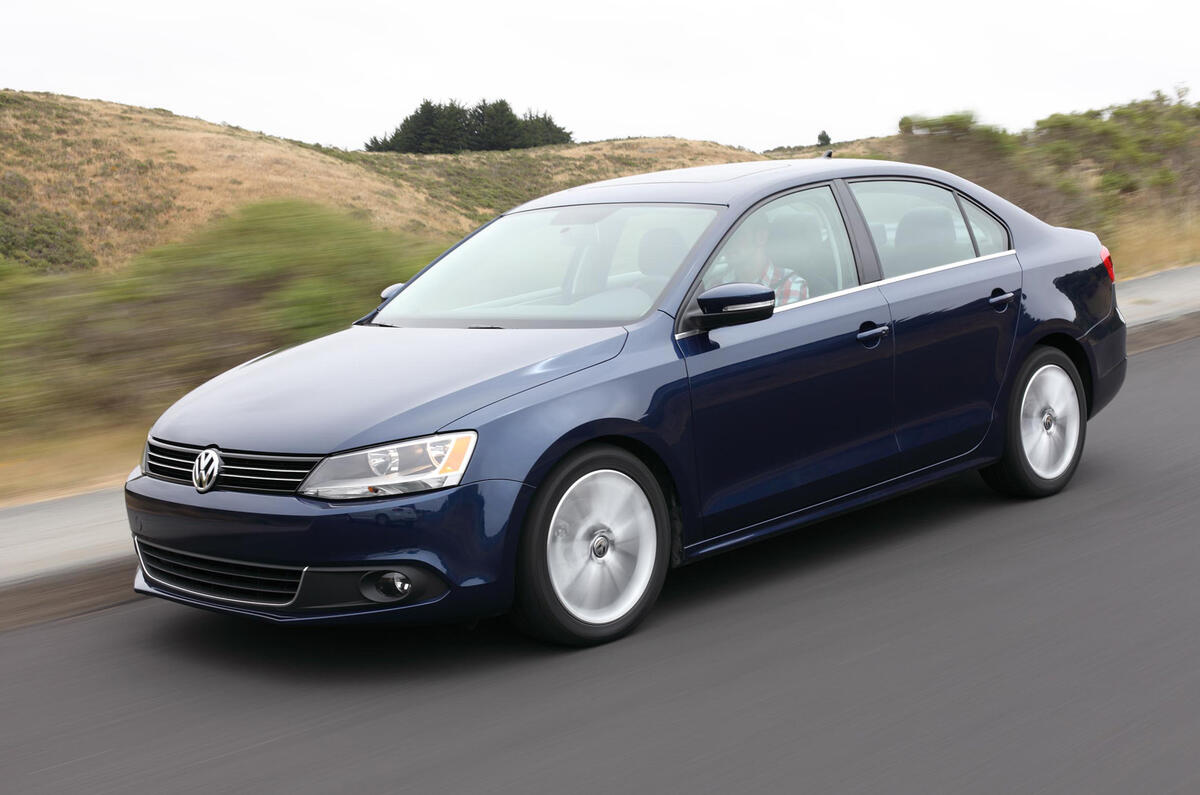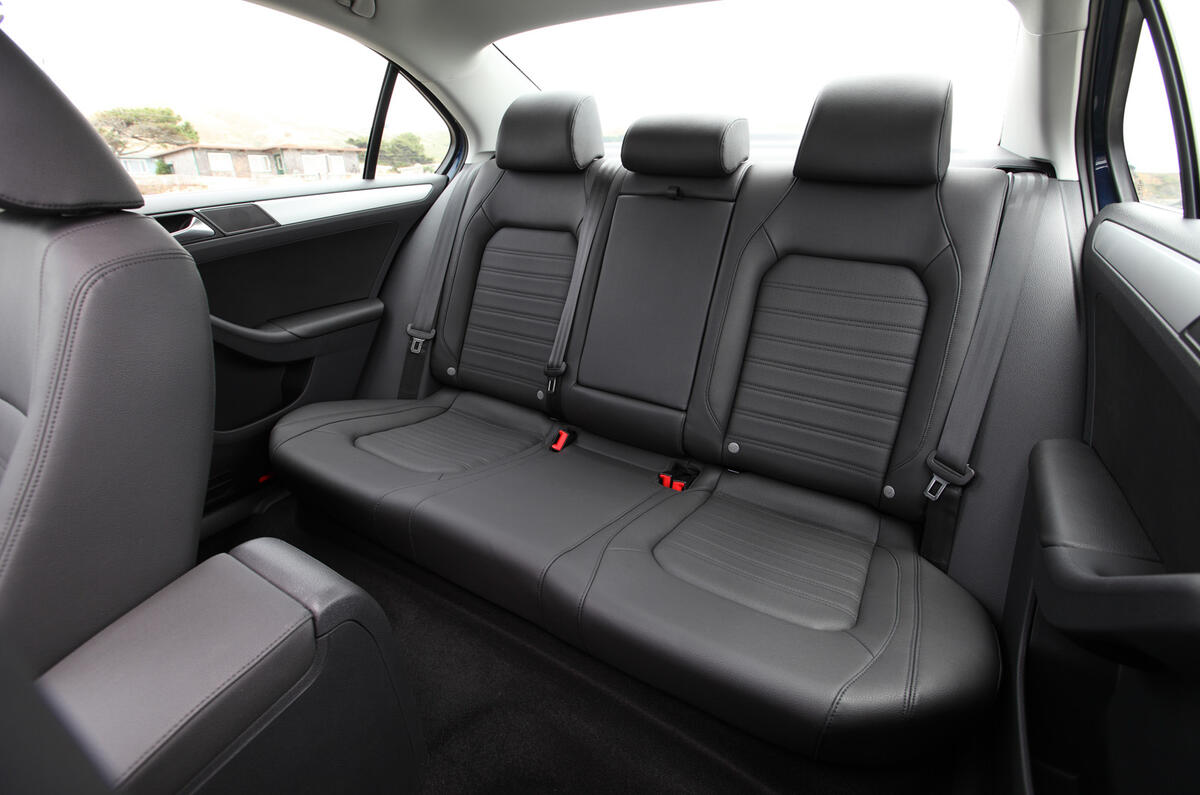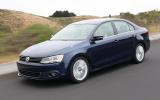What is it?
Volkswagen’s all-new Jetta saloon. It’s headed to UK showrooms in spring 2011, but it’ll be bigger news in the US, a market much keener on compact saloons for which this improved and enlarged version of VW’s Golf-based four-door has been expressely designed.
VW is aiming for massive sales gains in North America over the next five years. Previous versions of its Jetta and Passat have been over-priced and over-specified for US tastes, it says, and also extremely difficult to make a profit from, having been built in Europe and imported to the US.
See the road test pics of the VW Jetta
This new Jetta will be built exclusively in Puebla, Mexico, and goes on sale in the US this year for less than $16,000. Which makes it as cheap as a Toyota Corolla or Honda Civic saloon; cheaper even than a Chevy Cruze in Chevrolet’s home market.
Unfortunately, UK versions of the Jetta won’t be such compelling value – but they should still look cheap. While entry-level US Jettas make do with cheaper multi-point injection petrol engines, less standard equipment, hydraulic power steering, a torsion beam rear axle and slightly harder cabin plastics, British ones will get more expensive TSI and TDI powerplants, multi-link rear suspension, electro-mechanical power steering and proper slush-moulded dashboards. So they’ll cost more than US Jettas to make.
Still, the Jetta should start at roughly £17k for a 1.2 TSI in the UK, rising to around £22k for a range-topping 2.0 TSI petrol with DSG – value which, for a roomy family saloon, isn’t to be sneezed at.
What’s it like?
Our test Jetta was a 197bhp 2.0 TSI DSG – a close, if not quite perfect match for the range-topping Jetta that’ll be offered in the UK next year.
VW has added 90mm to the overall length of this car. It’s lost some of the appealing compactness of the old Bora and current Jetta as a result. But with 70mm of that extra length gone into the wheelbase, the Jetta’s now a cleverly packaged, surprisingly accommodating passenger car. Golf-derived it may be, but there’s more legroom in the back of the new Jetta than you’ll find in a Honda Accord, Seat Exeo or Volvo S40, and enough head and shoulder space for a 6ft 3in occupant to get truly comfortable. The Jetta’s boot is an enormous one too: 510 litres with the seats up.
The cabin quality and material tactility of our test car was good, if not quite up to Wolfsburg standards, but both will be improved in time for the Jetta’s European launch. In the main, the car’s cabin fixtures and fittings felt solid and expensive, in line with those of a familiar European Golf.
Second-rate refinement is another way you might have expected a Mexican-built VW to fall short of European standards, but this Jetta won’t confirm expectations that way, either. Mechanical refinement is very good; our TSI was smoother and quieter than a Golf GTI. It wasn’t quite as well isolated from wind and road noise, and didn’t quite have the same hushed and absorbent secondary ride as the Golf. Still, its rolling refinement felt good enough to put the likes of the Renault Laguna and Honda Accord to shame.
Slightly slacker body control made our Jetta fall short of the Golf’s standards on handling and roadholding, but that was at least partly due to softer North American chassis settings.

























Join the debate
Add your comment
Re: Volkswagen Jetta 2.0 TSI Sport DSG
VW's saloon versions of hathchbacks have been a mixed bunch, in my opinion, but I always really liked the Bora: I think the styling worked and it is a proper example of a compact saloon, just a nice size. You still see loads on the roads, it seemed to sell far better than the various Jettas so I think VW got it right with that one.
Re: Volkswagen Jetta 2.0 TSI Sport DSG
£17,000 for a $16,000 car made in Mexico? The world's car industry really does know the British buyer for an idiot.
Re: Volkswagen Jetta 2.0 TSI Sport DSG
Is it just me or does the rear look like an Audi A4's?
Hmmm.. typical US-model if you ask me. VW always sold more Jettas than Golfs over there IIRC, while in its home-market, the Jetta was always something of a rarity. So, of course it's a boring design: It needs to be to appeal to its target audience, who are pretty conservative. If they weren't, they'd buy a Golf or a sportier saloon like a BMW 3-series or an Audi A4.
Question is (as stated already): How will the next Passat compare to this behemoth?